A healthy lifestyle is gaining popularity day by day, it’s quite a trend in modern times, which is highly commendable. And therefore the number of people monitoring their diet (at least, trying to) is growing day by day. Help them in this good endeavor and create a nutrition app with an extended set of features.
If you follow clear tips of our article, you'll get enough information to construct your perfect food and nutrition tracker from scratch and learn about effective ways to monetize your service in order to pay off the cost of diet app development. Simply put, you’ll have a chance to make good money on a regular basis. Custom mobile application development services assist in developing diet and nutrition applications with many enhanced features.
Looking at popular diet apps in iOS & Android
Before delving into the more complex issues, let's take a look at the examples of popular fitness tracking solutions. Their experience may come in handy to build a diet application capable of making them a worthy competition.
MyFitnessPal
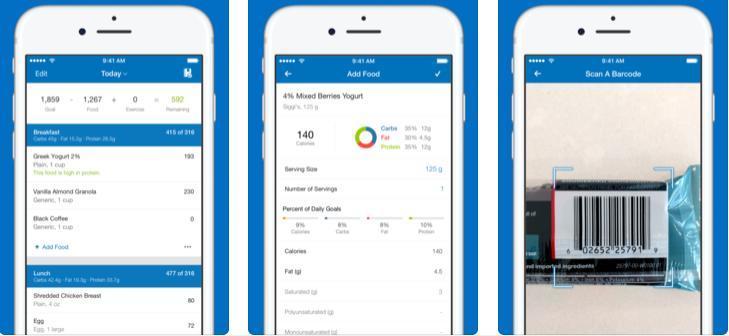
MyFitnessPal is one of the best food and nutrition apps for today. In addition to counting calories, the program takes into account the user's physical activity and offers a lot of other useful features. Its popularity is proven by the fact that the app has already been downloaded an incredibly large number of times (50 million or more - a figure which is impressive, right?). Also, it has received a huge amount of positive feedback.
Functionality:
- Control of nutrients which the user's getting during the day.
- A database of more than 2,000,000 products, which is available offline and periodically updated.
- Calculation of calorie recipes when they are entered into the database.
- Creation of an unlimited list of products in use (it’s a pretty useful feature of the food and nutrition tracking app!).
- The base of 350 fitness lessons and a possibility to make an unlimited list of your own exercises.
- Internal social network and a great chance to see friends’ progress.
- Setting individual goals (according to such data as age, health, activity level, gender, and more).
- Tracking your own achievements.
- Daily notification on the number of calories and nutrients received.
Lose It!
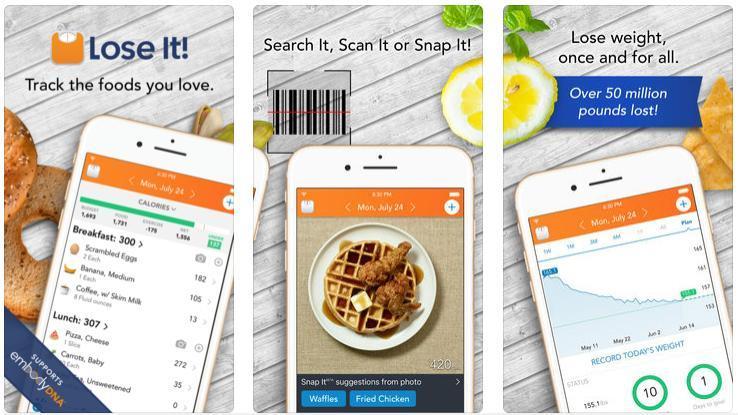
Lose It is another nutrition planner app offering a simple and easy method of tracking diet and physical activity. The Lose It database contains thousands of food names and recipes available in restaurants and grocery stores, all of which are approved by the Lose It team.
Functionality:
- An extensive database of products and activities with the possibility to add new ones.
- Tracking nutrients (proteins, fats, carbohydrates, vitamins, etc.).
- Automatic synchronization with the web version.
- Social internal network to support and motivate.
- Customization of recipes (say, you've found a new approach to making food, so you can change the old recipe).
- Gamification (the use of badges).
- The ability to share new products and recipes with friends.
- A reminder that you should enter the food eaten.
- Reports on activity and progress.
Eat This Much
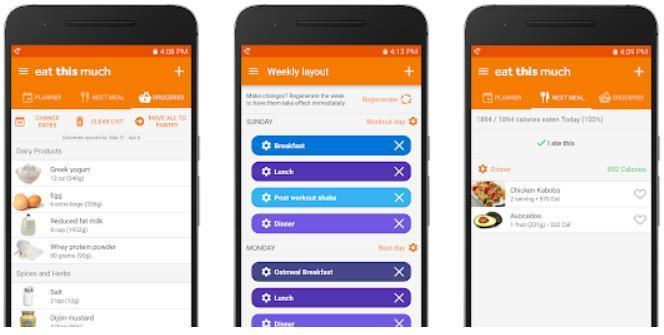
Discussing the nutrition apps for Android and iOS, we shouldn’t forget about Eat This Much - the service which makes up the meal plan based on user preferences. It has gained popularity among users thanks to numerous great features and clear interface.
Functionality:
- The possibility of drawing up a variety of rations per day.
- Customization of individual food preferences (vegans and diabetics will find it useful, they'll be able to indicate that they don't eat meat or sugar-containing products).
- Setting up an individual meal plan for the day (in the basic version). If you want to get a weekly meal planner app, you should pay a subscription.
- The ability to control the number of calories and PFC (proteins, fats, carbohydrates).
- Setting goals (related to the process of losing weight).
Where to get user data
To create a diet plan app, you should take advantage of food and nutrition tracking tools to obtain data, based on which you'll be able to provide the customer with everything he needs.
Let’s discuss it in detail.
Google Fit & HealthKit
When needing data on user activity, the easiest thing to do is to recourse to Google Fit (Android) and HealthKit (iOS). They're designed to gather health information in a single database (from third-party applications as well).
A few words about these tools:
- HealthKit is the default tool of the iOS platform aimed to collect health-related information. HealthKit guarantees the highest data security, with a bank-level of encryption. And to implement data transfer, the program, need to get the user consent.
- Google Fit serves all Android platforms (there are plenty of them) and gathers data, focusing on fitness activities. The information protection is guaranteed by Google’s privacy policy.
If you want to build a diet and nutrition mobile application, the idea to make use of these default services is a great one. Acting such a way, you can get all the data you need without any trouble. Also, you'll be able to expand your program functionality and easily exchange data with different health-related mobile apps.
Apple Watch, Android Watch, fitness bracelets, and others
Also, effective workout and diet apps should exchange information with external wearable devices. We can name a lot of them, such as smartwatches, heart rate monitors, fitness bracelets, and other gadgets intended to gather data on human activity.
Mobile applications work with the aforementioned gadgets in two ways:
- Activity data collected in the device is processed directly in the smartphone application.
- Users load an adapted version of apps for managing their activity, diet and health conditions in the device itself. Thus, the gadget can work autonomously, but with limited functionality. Such an option is possible for smart-watches and some types of bracelets.
Features of a diet tracker app
People use fitness apps for personal purposes, and you’re willing to get it in order to earn. But to achieve this aim, you should offer potential customers something very useful. So, it's time to discuss the functionality of your diet control app.
Advanced user account
Suppose, the user has downloaded your nutrition planner app and created an account. It would seem the most difficult stage is over... but no! In fact, the fun is just beginning. And now your task is to "hook" the user, convince him to open the program more often. So, first of all, you should offer him an advanced user account.
A perfect user profile must include all data on the person’s physical condition: gender, age, weight, body parameters, activity level, health status (say, pressure), etc. Such information will make the process of using your app for diet control much more efficient.
Dynamics of changes
Of course, the user would also be happy to observe his progress: weight loss, building muscle, and so on. By saving all the data on the person's state, you can later provide him with statistics on his achievements (a good option is a clear and colorful infographic).
Food logging
The person who monitors proper nutrition should have the possibility to control his diet. That’s why he must write down what he has been eating during the day.
Previously, people had to use all sorts of paper notepads, but now, with a meal planner app, the situation has become simpler. And the Food Logging feature allows users to describe their ration without unnecessary trouble and carrying around bulky writing-pads.
Calorie calculator
The Food Logging feature will be of little use if a person won’t know the caloric content of his food. Therefore, provide him with a convenient and understandable calorie calculator so that the user would be able to find out the energy value of the products he plans to eat or buy.
Activity tracking
Of course, the main goal of our nutrition app is diet control, but you shouldn't forget about the activity either. After all, a user would be happy to get an idea not only about the number of calories consumed but also about his energy costs. It will help him plan his diet more efficiently - which means he'll be more loyal to your service.
Connection to wearable devices
As we’ve said earlier, in order to implement the previous feature, you need to get information on the user's physical activity. And you can obtain the required data using different wearable devices (as you probably remember). Consequently, diet mobile apps must freely connect to all sorts of gadgets.
Dietitian tips and recipes
Your task is to build a diet application, attract a lot of clients, and turn them into loyal users. So, you won't do with just an activity tracker, food logging and calorie counter. You should become a friend of your user - the person who tells him the right recipe or helps with good advice (something like “the nutritionists of the world's celebrities recommend"). In short, you have to be his faithful assistant in becoming an adherent of a healthy lifestyle.
Shopping list
Another good option is user assistance in making diet plans and shopping lists. Tell a person what products he should buy if he strives to lose weight and wants to lead a healthy life.
Push notifications
Show your user that you're worried and care about his progress. Remind him, through push notifications, that today he has consumed too many calories (or something else of the sort).
Don't be intrusive and rude, but a little humor would come useful.

Social networks
Af course, a user should be able to share his achievements with friends on social networks. It greatly increases motivation because most people tend to look better for one another. And motivation leads to success and makes a person want to use your diet planner app more actively.
Gamification
Another important factor is gamification, i.e. supplementing the process of losing weight with game elements. Give users the opportunity to set goals, compete with friends, add cool animations.
Other ideas to add gamification to Android and iOS diet apps:
- increasing the user status after he has made a new record;
- virtual or real gifts for achieving the goal;
- elements of monetization, such as prizes from partners or sponsors of the project (advertisers).
By the by, the last way of gamification is also a way of your monetization, and this issue should be considered separately.
How you can make a profit with diet apps
Creating a fitness and nutrition application is only half the battle. You need to earn on it, especially, taking into account the cost to develop a diet app for iOS and Android.
What options do you have?
In-app advertising
This is one of the most common methods of earning on diet apps (on any mobile service, to be more specific). The main purpose is to interest as many users as possible. Data on their behavior is then analyzed and made available to advertisers willing to promote their services or goods.
Bottom line: you'll be making money by offering your meal planner app a the advertising space.
Pros:
- You’ll be able to gain a solid customer base in a short time period.
- The mobile ads have already surpassed the traditional advertising market (we mean newspapers, radio, magazines, and so on).
Cons:
- Most people are annoyed by ads, which can lead to deleting your service.
- The size of the screen also makes its limitations - you don’t have much space for advertising.
Freemium
Maybe, it’s one of the best ways to monetize your application. As a rule, implementing the Freemium model, you have to provide 2 types of functionality: the first set is standard and requires no payment, and the second one includes more helpful and interesting features (a user has to pay to access them).
Bottom line: the Freemium model attracts people with basic and default features and persuades users to pay if they want to get more.
Pros:
- The described method of monetization reduces the time required to create a powerful user base. Moreover, most users are going to enjoy the diet planner app for months.
- It’s a very flexible solution which can be used in the vast majority of applications of all sorts.
Cons:
- Lack of default features will disappoint users, and they’ll choose another application.
- On the other hand, if the basic functionality is too advanced, people will have no reason (and desire) to pay to get the improved version.
Paid apps
Here the situation is rather simple: the customer must pay to access these Android and iOS diet apps. The key to success is the ability to present the application in a favorable light, so as to interest the person at the very beginning. It means you should colorfully describe the “killer feature” of the program in the catalog of Google Play and App Store.
Bottom line: you immediately get the money, but the principle of "pay, then take" should be chosen by those teams which are confident in their ability to convince users of the advantages of the service in question.
Pros:
- You get the money literally right away.
- People are likely to often use the program (because the money has already been spent).
- Most paid diet mobile apps have no promotional ads which greatly irritate users.
Cons:
- The mobile market is saturated with great offers, and selling something new is not so easy, it’s a task of increased complexity.
- download statistics also don’t make you happy and don’t promise quick earnings
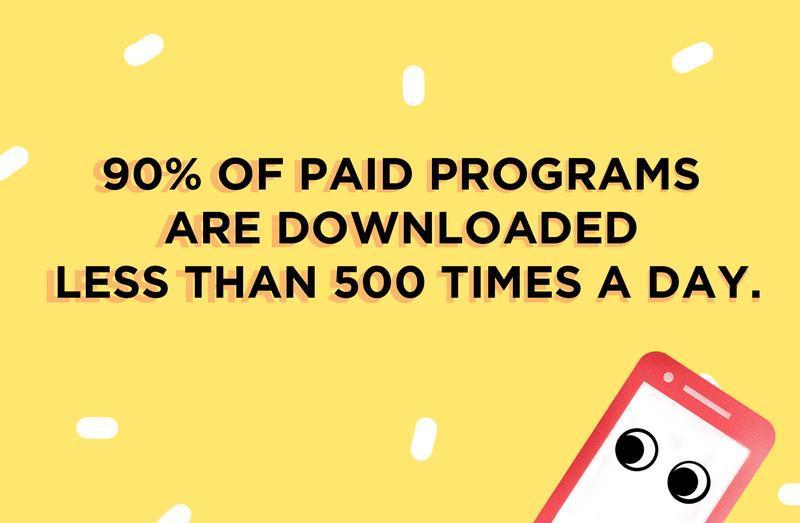
In-app purchases
Mobile programs monetized according to the described pattern are selling virtual or real goods. The type of product sold depends on the application type.
Bottom line: such a business model helps you create an additional sales channel.
Pros:
- users'll be happy to buy something interesting (but not mandatory), and this will make them more loyal.
- The in-app purchases feature can be used as an extra source of making money (in addition to any other monetization method).
Cons:
- You will probably have to share your income with application catalogs (this is about selling virtual products, not real ones).
- This monetization option doesn’t adapt well for workout and diet apps.
- Authorities are becoming more demanding and hardening the laws related to the provision of information about a particular product (including those sold through applications).
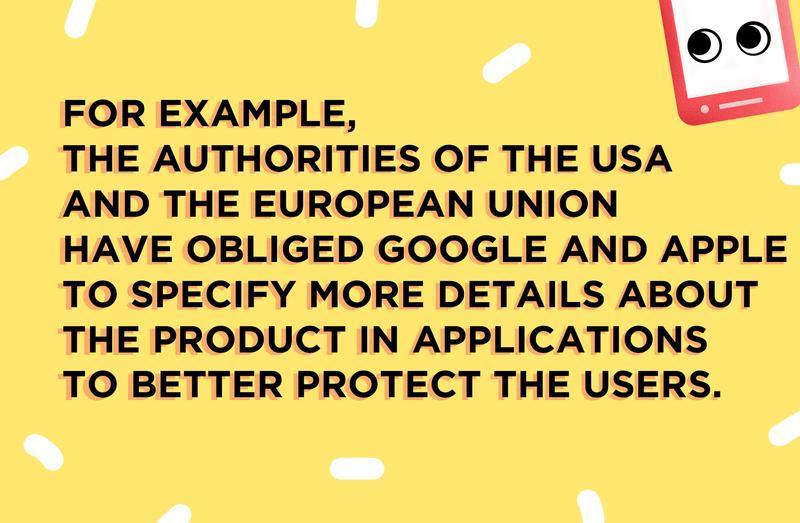
Subscription
The scheme resembles a freemium case but has a certain distinction. Here we're talking, as a rule, about the user getting access to the content, and not to the features of a diet tracker app.
Typically, some of the content is provided without payment. If the user wants to get more, he needs to pay a subscription (which usually lasts 1 or 3 months).
Bottom line: the model allows the person to try out the program before paying.
Pros:
- You're constantly getting a steady income
- Subscription renews automatically (unless the user has specified a different option)
- Most users of the program of the sort are quite loyal.
- Developers are more interested in working on a program with a subscription system, they're more willing to come up with new ideas.
Cons:
- Alas, not all applications work well in tandem with a subscription. Although, when it comes to low carb diet apps, the problem is solved, because there is a lot of content which can be divided into basic and paid one (video training lessons, recipes, etc.).
Sponsorship
We’ve already mentioned the sponsorship when discussing the gamification factor. The method is pretty simple: the sponsor (usually the advertiser) encourages the user to perform certain actions (related to the application) and rewards him if he has fulfilled the set condition. You, as the owner of the diet control app, get your profit percentage.
The same RunKeeper, one of the popular fitness tracking solutions, is an excellent example of a sponsorship model. The service encourages the user to take certain actions (say, walk a specified number of steps), and advertisers pay those who have achieved the goal.
Bottom line: the nutrition planner app allows luring users more efficiently because you can offer them not only features but also gifts from the advertiser.
Pros:
- People who received the award will actively use such a wonderful food and nutrition tracking app.
- Everybody is happy: the program owner earns money, the advertiser promotes his product or service, and the user gets his reward.
Cons:
- The sponsorship model requires a strong salesperson in the team.
Hopefully, these tips will allow you not only to cover the diet app costs but also make significant money. Just remember, the monetization plan must be created and implemented before the release. And, by the way, the above methods can be combined, it's not necessary to use only one of them.

We’ve told you in detail how to build a diet and nutrition mobile app and succeed. We hope our simple tips will come in handy and help you implement your idea.
Of course, we understand that you're unlikely to cope on your own, and therefore we offer our assistance as skilled and high-qualified developers. We have an impressive experience in building all kinds of apps, websites and creating UI/UX design. The proof of Agilie expertise is our numerous projects.


